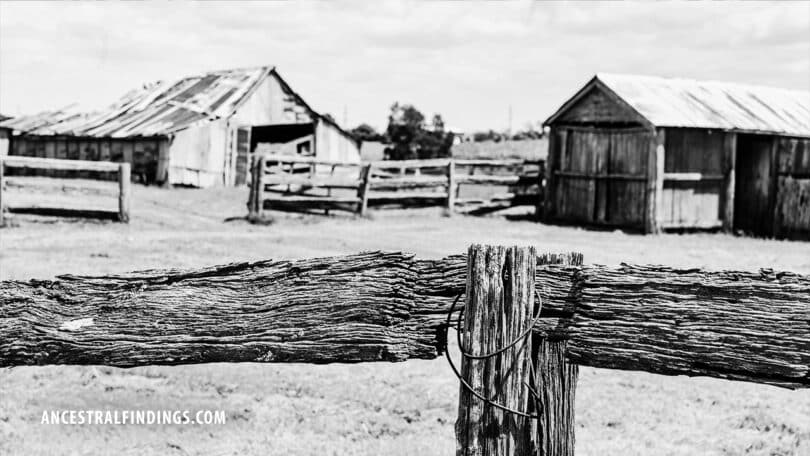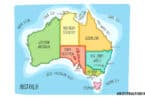Australia’s early settlers, whether former convicts or free immigrants, played a crucial role in shaping the country’s landscape. As they established farms, businesses, and communities, they left behind a trail of land records that provide invaluable insights into their lives and the nation’s development. For genealogists, these records are vital for tracing ancestors and understanding the context of their lives in early Australia.
The Significance of Land Records in Genealogy
Land records are more than just property ownership documents; they offer a window into your ancestors’ social and economic status, their movements within Australia, and their connections to the broader community. From land grants given to emancipated convicts to free settlers’ purchase and sale of land, these records can reveal much about your family’s history.
In early Australia, land was a symbol of success and stability. Many settlers aspired to own land, and those who did were often seen as pillars of their communities. By examining land records, you can trace your ancestors’ acquisition and development of property, shedding light on their successes, struggles, and contributions to Australian society.
Discovering My Ancestors Through Land Records
In my own genealogical research, I found that land records were key to uncovering a deeper understanding of my ancestors’ lives. One particular discovery stands out: I traced the land records of an ancestor who had arrived in Australia as a free settler in the early 19th century. Through these records, I was able to piece together not only where they lived but also how they managed to acquire more land over the years, reflecting their gradual rise in the community.
What I found most rewarding was how these records connected different generations. They revealed that land acquired by my ancestor was passed down, showing the continuity of the family’s presence in the area. Seeing how they contributed to the local community brought a sense of pride and connection, and it reminded me that these records aren’t just dry documents—they’re the stories of our families.
Types of Land Records Available
There are several types of land records available in Australia, each offering different kinds of information:
- Land Grants: These were given to convicts who had served their sentences and to free settlers as an incentive to populate the colony. Land grant records typically include the grantee’s name, the land’s size and location, and the grant’s conditions.
- Land Sales: Records of land sales can provide details about the buyers and sellers, the price of the land, and any conditions attached to the sale. These records are particularly useful for tracing the movement of families as they bought and sold property.
- Leases and Mortgages: These records can offer insights into the financial status of your ancestors, showing whether they leased land or took out mortgages to finance their property. They can also reveal business relationships and partnerships within the community.
- Crown Land Records: Crown land was land owned by the government, and records of its allocation and sale are valuable for tracing how land was distributed and who was eligible to receive it. These records often include maps, descriptions of the land, and details of any improvements made.
Accessing Australian Land Records
Australian land records are generally well-preserved and accessible through various state archives and online databases. Here are some key resources to help you start your research:
- New South Wales Land Registry Services
The New South Wales Land Registry Services holds a comprehensive collection of land records, including grants, deeds, and transfers. Many of these records are digitized and can be searched online.
- Victoria Land Titles Office
The Victoria Land Titles Office offers access to land grants, sales, and transfers within Victoria. Their online platform allows you to search for and order copies of historical land records.
- Queensland State Archives
The Queensland State Archives provides access to land records dating back to the colony’s early days. Their online catalog includes detailed descriptions of available records and access instructions.
- Trove
Trove, managed by the National Library of Australia, offers digitized newspapers and other resources that can complement land records. You may find advertisements for land sales, public notices, and other documents that provide context to your ancestors’ property dealings.
- South Australian Land Services
South Australia’s Land Services Group offers access to land records, including land grants and sales. These records are essential for tracing the establishment of settlements in South Australia.
Analyzing Land Records: What They Reveal About Your Ancestors
Once you’ve accessed land records, the next step is to analyze what they tell you about your ancestors. Here are some key aspects to consider:
- Economic Status: The size and value of the land can indicate your ancestors’ economic status. Large tracts of fertile land suggest prosperity, while smaller, less desirable plots might indicate financial struggles.
- Family Relationships: Land records often mention family members, such as co-owners or heirs. These details can help you establish relationships and trace family connections across generations.
- Migration Patterns: Land sales and transfers can show how your ancestors moved within Australia. If they bought and sold land frequently, it might suggest they were speculating or seeking better opportunities elsewhere.
- Community Involvement: If your ancestors were involved in multiple land transactions, it might indicate they were active in their local community. They may have been influential figures, possibly holding public office or participating in local governance.
Case Study: Tracing a Pioneer Family Through Land Records
Consider the example of the hypothetical O’Brien family, who emigrated from Ireland to New South Wales in the early nineteenth century. By accessing land records, you discover that Patrick O’Brien was granted a parcel of land shortly after his arrival. Over the years, he expanded his holdings, acquiring additional land through purchase and marriage.
The land records reveal that Patrick’s son, Thomas, inherited the family’s holdings and continued to manage the property. As you dig deeper, you find mortgage records showing that Thomas borrowed money to improve the land, build a homestead, and expand the farm. These improvements are noted in the Crown land records, which detail the construction of new buildings and the clearing of additional acreage.
By piecing together these records, you create a vivid picture of the O’Brien family’s journey from immigrants to established landowners, illustrating how land records can help you trace the development of your ancestors’ lives in Australia.
The Value of Land Records in Australian Genealogy
Land records are an indispensable tool for genealogists researching Australian ancestry. They provide a tangible link to the past, offering insights into your ancestors’ lives, their economic status, and their role in the development of early Australian society.
By accessing and analyzing these records, you can uncover the stories of your pioneer and settler ancestors, tracing their journey from newcomers to landowners. These records help you build your family tree and connect you to Australia’s settlement and growth history.
Read More:
Bound for Australia: A Guide to the Records of Transported Convicts and Early Settlers by David T. Hawkings – This book provides an extensive guide for genealogists researching transported convicts and early settlers in Australia. It covers various records, including land titles, criminal registers, and ships’ crew lists.
Australian Men of Mark (1889-90) – Available as an eBook, this two-volume publication contains biographies of notable Australians from the late 19th century, providing insights into the nation’s early influential settlers and landowners.
South Australian Land Records – A free online resource through the South Australian Integrated Land Information System (SAILIS), where researchers can access land records dating back to 1858.







